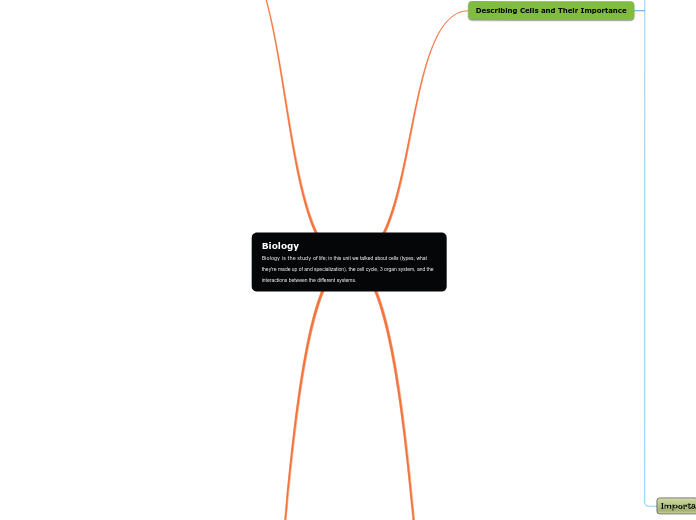Common Ancestor
(has DNA, ester bonds)
Common ancestor of Eukarya and Archaea
- has Histones
Archaea
-Ether linkage
Eukarya
-have nucleus & organelles
Common Ancestor
Archaeplastida
-primary plastids
Common Ancestor of Chlorophytes, Charophytes, and Land Plants
Common Ancestor of Charophytes and Land Plants
Land Plants
-sporic life cycle
-embryos
-apocal meristems
-gametangia
-sporangia
-dessication-resistant spores
Common Ancestor of Seedless Vascular Plants
-lignin
-xylem and phloem
-leaves
-dominant sporophyte generation
-thick waxy cuticle
-stomata
Common Ancestor of Monilophytes, Gymnosperms, and Angiosperms
-megaphylls
Gymnosperms
-endosperm
-heterospory
-wood
-pollen
Bald Cypress
Scots Pine
Angiosperms
-flowers
-fruit
-ovules
-ovaries
-seed
-pollen
White Water Lily
Southern Magnolia
Monilophytes
Eastern Marsh Fern
Lycophytes
Fan Clubmoss
Hornworts
Field Hornwort
Mosses
Wooly Feather Moss
Liverworts
Common Livewort
Charophytes
Braun's Stonewort
Chlorophytes
Rhodophytes
Unikonta
Opisthokonta
-single posterior flagellum
Fungi
-absorptive heterotrophy
-chitin cell wall
-zygotic life cycle
-multicellular
Nucleariids
Fly Agaric
Common ancestor of Animals and Choanoflagellates
-mobility
-gametic life cycle
-complex organ systems
-multicellular
Choanoflagellates
Common Ancestor of Animals and Choanoflagellates
Eumetazoa
-has tissues
Bilateria
-bilateral symmetry
-triploblasty
Protostomia
-spiral and determinate cleavage
-blastopore becomes mouth
-cephalization
Ecdysozoa
-ecdysis
-cuticle
Arthropoda
-Ubx and abd-A Hox genes
Hexapoda
Monarch Butterfly
Crustacea
Chesapeake Blue Crab
Chelicerata
-presence of chelicerae
Southern Black Widow
Nematoda
Roundworm
Lophotrochozoa
-trochophore or lophophore
Mollusca
-mantle
-foot
-visceral mass
Bivalvia
-divided into two halves
Soft Shell Clam
Cephalopoda
-no hard shell
Humboldt Squid
Gastropoda
-cilia
Golden Apple Snail
Platyhelminthes
-flatworms
-acoelomates
Rabditophorans
Free Living Rhabditophorans
Pseudobiceros sp.
Trematoda
-parasites
Sheep Liver Fluke
Cestoda
-parasites
Pork Tapeworm
Annelida
-body resembles fused rings
Common Earthworm
Deuterostomia
-radial and intermediate cleavage
-blastopore becomes anus
Echinodermata
-water vascular system
Common Ancestor of Echinoidea and Holothuroidea
Holothuroidea
-lack spines
California Sea Cucumber
Echinoidea
-no arms
Purple Sea Urchin
Common Ancestor of Asteroidea and Ophiurodea
Ophiurodea
-flexible arms
Serpent Star
Asteroidea
-arms with tube feet that resemble suction cups
Giant Sea Star
Chordata
-notochord
-hollow dorsal nerve
-post-anal tail
-pharyngeal slits
Common Ancestor
-vertebrae
-cranium
-cartilaginous skeleton
Common Ancestor of Chondrichthyes
-jaws
Common Ancestor
-lungs/lung derivatives
-bony skeleton
Common Ancestor
-lobed fins
Common Ancestor
-limbs with digits
Common Ancestor of Reptilia and Mammalia
-amniotic egg
-endothermy
Mammalia
-milk
-hair
American Black Bear
Reptilia
Roseate Spoonbill
American Alligator
Green anole
Green Sea Turtle
Amphibia
Red-Eyed Tree Frog
Lobe-Finned Fishes
Leopard Lung Fish
Coelacanth
Ray-Finned Fishes
Blue Tang
Chondrichthyes
Great White Shark
Agnathans
-cartilaginous skeleton
Pacific Hagfish
Urochordata
-tunicates
Sea Squirt
Cephalochordata
-lancelets
Branchiostoma lanceolatum
Cnidaria
-radial symmetry
-diploblasty
Scyphozoa
-produce a medusa
Moon Jelly
Hydrozoa
-alternate between polyp and medusa
Pennaria disticha
Anthozoa
-only polyps
Elkhorn Coral
Profiera
Giant Barrel Sponge
Amoebozoa
-pseudopodia that extend like tubes
Slime Molds
SAR
Rhizaria
-filose pseudopodia
Foramnifera
Radiolorans
Common Ancestor
-secondary plastids
Alveolates
-or tertiary plastids
-membranous vesivles on cell membrane
Dinflagellate
Stramenopila
-tripartite flagellar hair
Diatoms
Giant Kelp
Excavata
-feeding groove
-secondary plastids
Euglenoids
Bacteria
-Peptidoglycan









